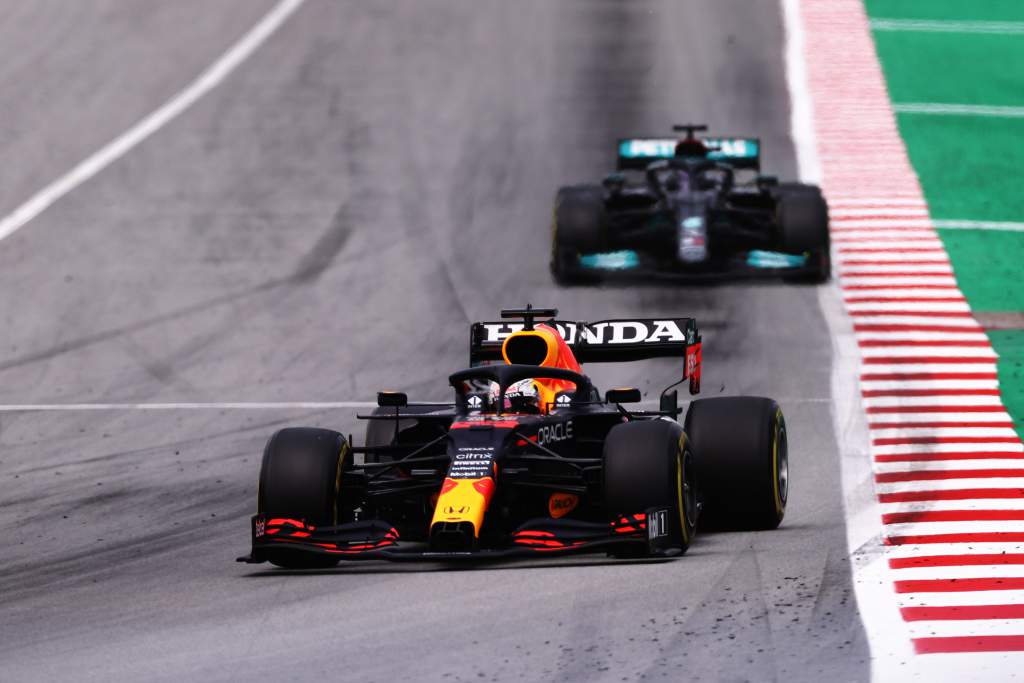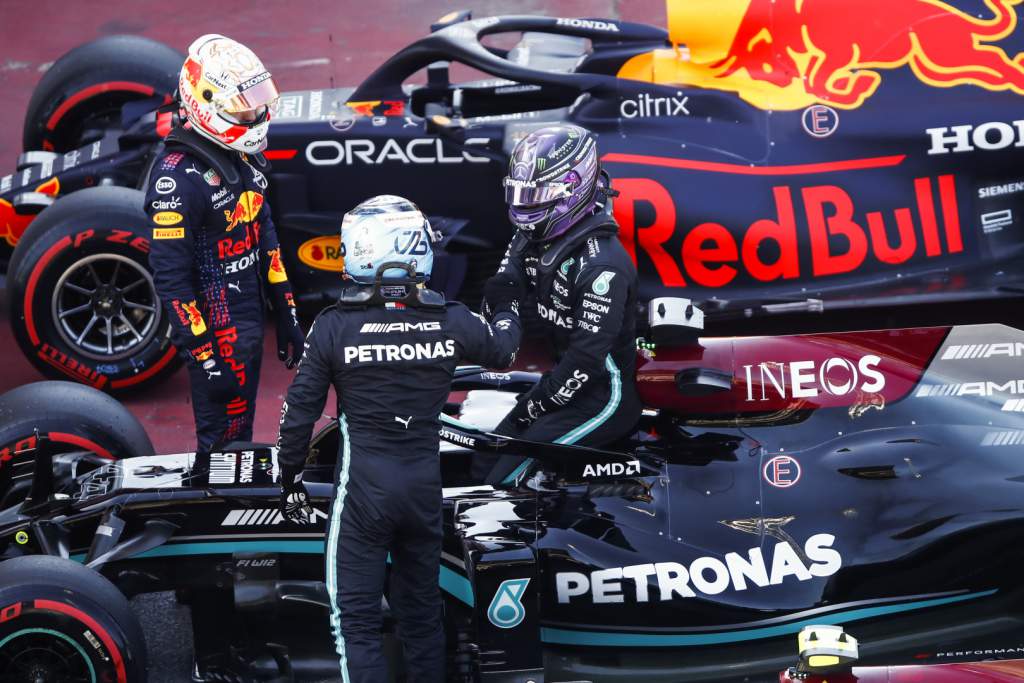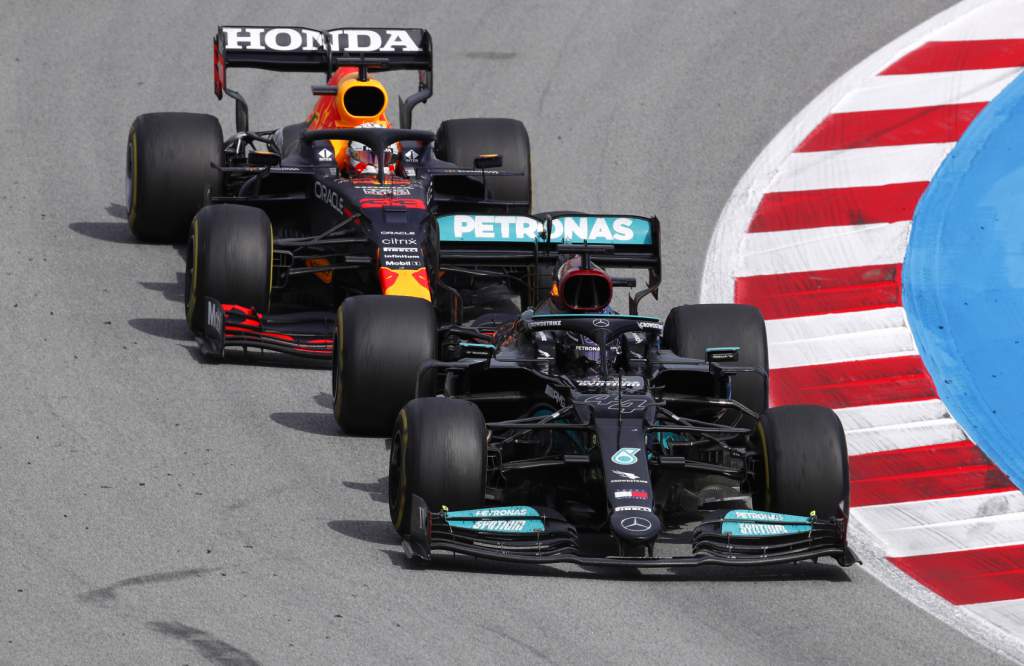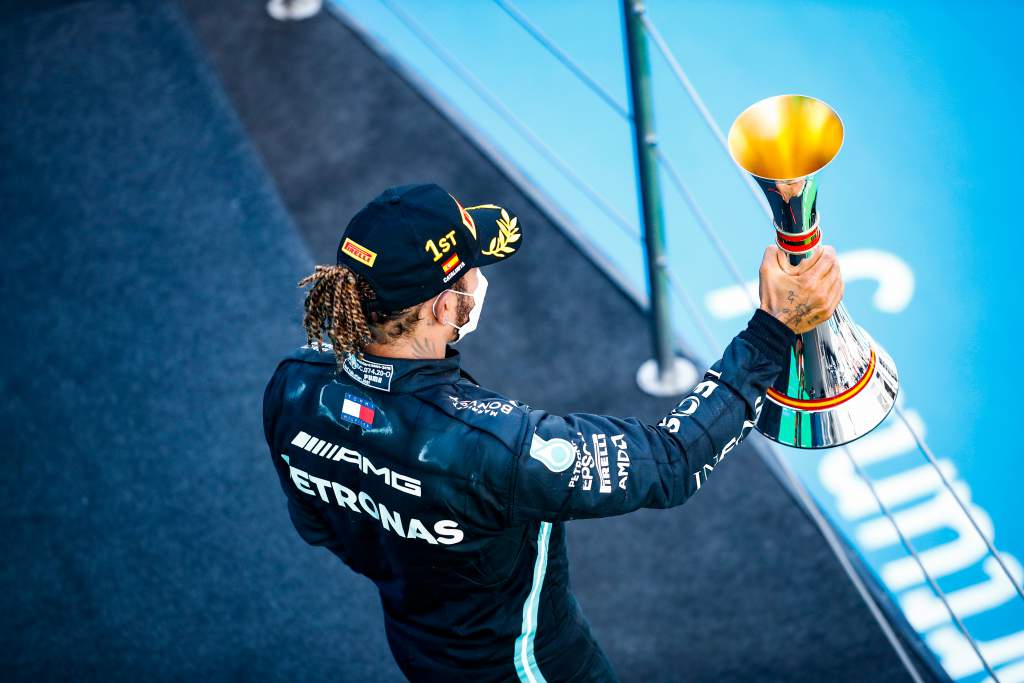Three Mercedes poles and three Mercedes wins from four races, and a pair of early championship leads, would seem to discredit the early theory that Red Bull started the 2021 Formula 1 season with the fastest car.
Lewis Hamilton has managed to win three grands prix despite being behind Max Verstappen on-track in all three of those races, the latest come-from-behind triumph ticked off in Spain last weekend.
Like in the Bahrain season opener, an aggressive strategic play that only the combination of Hamilton and a Mercedes could pull off was at the heart of the Spanish GP’s narrative.
But as The Race’s Mark Hughes explained on Monday morning: “This time the Mercedes was simply a faster car over a race distance even if there was nothing in it over a single lap – and both those hard facts arose from the way they worked the tyres, something which Hamilton and the team between them made clinical use of.”

The trait that defined the Spanish Grand Prix was tyre management. It allowed Hamilton to run at a pace Verstappen couldn’t match, and that continued a theme of Mercedes producing stronger race performances than Red Bull despite repeated near-as-makes-no-difference qualifying results.
“We are still not really at a stage where we go in there thinking we’ve got the best race car,” says Mercedes’ trackside engineering director Andrew Shovlin.
“We are better at looking after the tyres, and it’s actually quite hard to say what it was.
“We were able to sit behind them and when you are the lead car and someone can sit on your gearbox for a whole stint, it’s not good news.
“It does look to be a bit of a trend that maybe we’ve got a slightly more neutral car.
“Theirs seems to be a bit harder on the rear tyres over a stint whereas we are using both axles quite well.”
Shovlin says more data is required to see whether that’s really a feature of the car or something intrinsic to Barcelona. But on reflection, each of the four races have featured a shift in performance towards Mercedes on Sunday – even if initially that didn’t give an outright faster car.

Three pole positions for Mercedes are a red herring in terms of judging the two cars’ single-lap pace. Verstappen should have been on pole at Imola (he made a costly mistake on his best lap) and he also set the fastest time in Portugal qualifying before the lap was deleted.
We may conclude that in terms of underlying performance the Red Bull does have a tiny edge. Even in Spain, a Mercedes stronghold in recent years, Verstappen only lost out by 0.036s and outqualified Valtteri Bottas. But it seems to lose that advantage on Sundays.
The Red Bull was the faster car in the Bahrain Grand Prix but not by as much as in qualifying and not by enough to take back the track position Mercedes won on strategy. At Imola, Hamilton looked stronger as the opening intermediate-shod stint on a drying rack wore on, and there was nothing really between them in the dry.
The first time Mercedes clearly had a stronger package was in Portugal, where superior straightline speed got Hamilton back ahead of Verstappen and the Red Bull didn’t quite have the pace on medium tyres – even though Verstappen beat Bottas again.
And Mark’s Spanish GP race analysis really is all you need to understand why Mercedes was simply too good for Red Bull to beat at Barcelona.

It would therefore seem that the Red Bull runs out of steam over a grand prix distance.
“We’ve seen it since Bahrain, that their race pace has been better than ours at each grand prix that we’ve seen so far, and I think that their degradation has been better than ours,” admits Red Bull team boss Christian Horner.
“We knew these last two circuits would play to their strengths. They’ve done that, but we’re an awful lot closer than we have been.
“I think if we can find some more race pace it’s still very, very tight between the two cars.”
The gap’s so close that, if we assume Red Bull’s right and Mercedes’ car was better suited to Portugal and Spain, then other tracks will shift the advantage back towards Verstappen and the RB16B.
Next up is Monaco, a place Red Bull has often starred even when its package has toiled at most other circuits in a given season. It would seem foolish to consider anyone other than Verstappen the favourite to win there.
“On paper it is probably better for them,” Shovlin admits. “But we’ve had good pace in the slow speed [final sector at Barcelona], that’s normally a good indicator for Monaco, and Monaco is an awfully difficult race to win.
“Even if you go there with the best car and you’ve got a great package, it’s still an awfully difficult race to win.
“If we are not the quickest, we will try and make their life difficult.”
That’s what Mercedes has done so far this season, flipping a deficit into an advantage on several occasions.

Contrary to what the results from the first four races (and the championship picture) suggest, there’s still life in the theory Red Bull has the fastest car. But if it does, it’s only by the narrowest of margins, and there’s a chance it’s only over one lap.
‘The quickest’ tends to be a verdict reserved for qualifying but so far this season’s it’s been an unrewarded accolade that hasn’t translated to Sunday’s races.
If the defining trait of the Mercedes vs Red Bull battle really is a qualifying edge for Red Bull and a Sunday advantage for Mercedes, then the Hamilton wins that seem like business as usual are going to keep being earned the hard way. And Verstappen will be a victory contender at almost every race.
That should make the 2021 season a classic even if the final outcome feels frustratingly familiar.



